FOOTBALL
Michigan State football: Expectations for the starting QB in 2023
These are realistic expectations.
Published
2 years agoon
By
Joey Shaver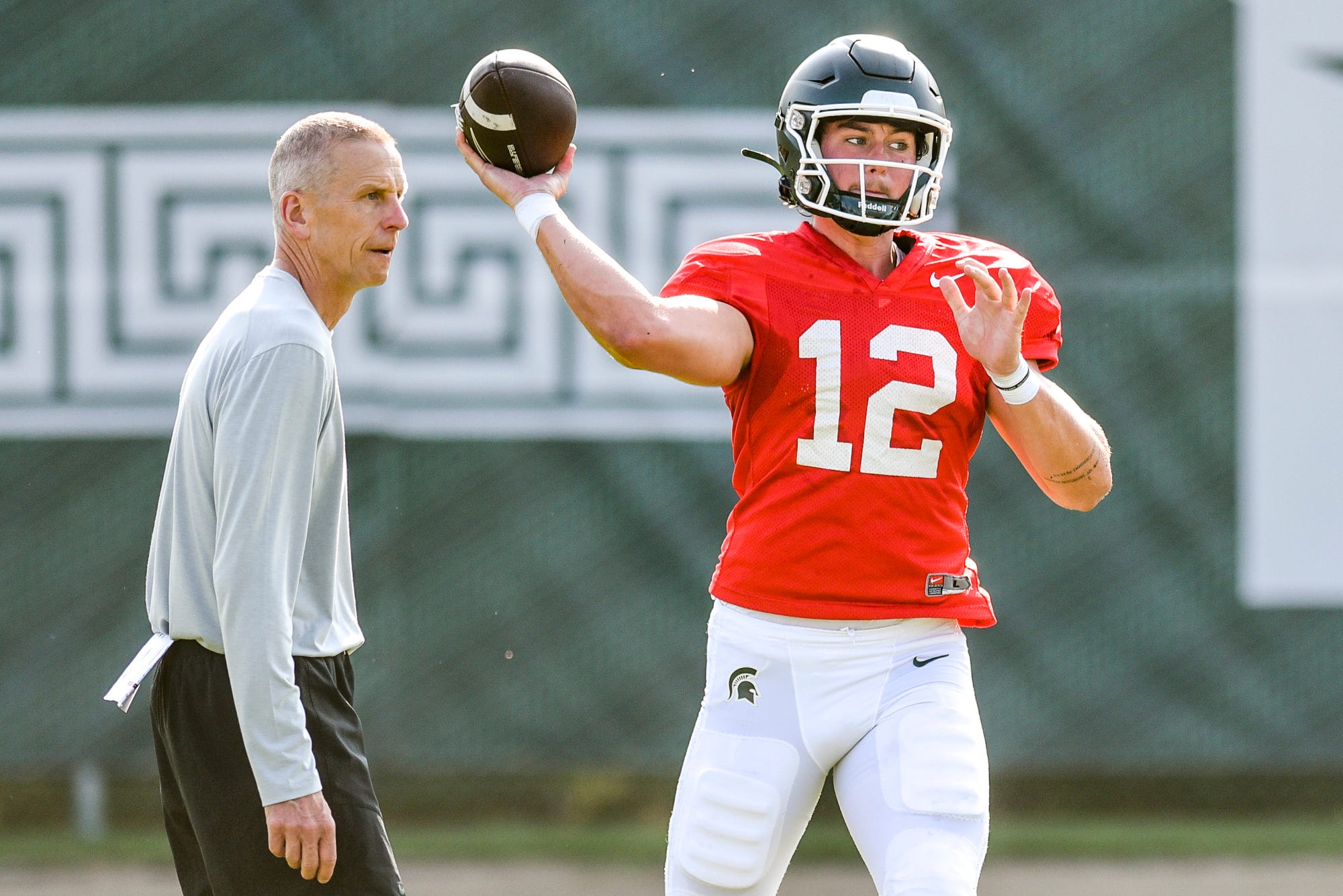
If Michigan State football is going to have any success this season, the quarterback position must reach these goals.
Michigan State football is still trying to decide who its starting quarterback will be. What should we expect from the position?
As we anxiously await the start of the season for Michigan State football, there will be no story bigger than the battle for starting quarterback. Redshirt sophomore Noah Kim and redshirt freshman Katin Houser figure to be entrenched in an old-school competition.
Given the fact that neither player has received extensive playing time, it’s hard to project who might have the upper hand since we have almost nothing to base our opinions on. Houser has only been on campus for a year, and Kim played sparingly in mop-up duty last season – often against second and third-team defenses.
While we may not know who will be playing quarterback on Sept. 1, we can look at historical statistics to try and get an idea of what Michigan State will need out of the position.
Coaches will tell you it’s not about the numbers. I buy that to an extent. It’s impossible to ignore the fact that good teams often go as far as their quarterback play will take them. I took a look at the past five seasons of quarterback play in the Big Ten. I’ve highlighted three statistics that I believe separate the “good” quarterbacks from the “average” or “bad”. In other words, if Michigan State’s starter can meet or exceed these thresholds, they should get to a bowl game. At the very least, if things go poorly, but their quarterback meets these goals, it won’t be an offensive problem.
2:1 touchdown-to-interception ratio
In a different world where Michigan State is playing for a Big Ten title, this number increases to 3:1 or maybe even 4:1. Generally speaking, though, a 2:1 ratio for a starting quarterback in the Big Ten should be more than enough to be competitive.
In 2022, C.J. Stroud, J.J. McCarthy, Sean Clifford, Taulia Tagovailoa, and Tommy DeVito all maintained this ratio. What else did those teams have in common? They all won seven or more games and were pretty clearly five of the six best teams in the conference. If we extrapolate this further, 2018 Illinois and 2019 Maryland are the only Big Ten teams to win fewer than six games since 2018 with a quarterback maintaining that 2:1 ratio. Interestingly enough, Michigan State has only had one quarterback do it in the past five seasons. Payton Thorne’s record-setting 2021 (27 touchdowns and 10 interceptions) coincides with Michigan State’s best offense during that span.
Looking at total touchdowns or total interceptions on their own isn’t conclusive. Everything is relative. The ratio between the two is extremely important because it represents the reward that comes with risk taking. Interceptions are going to happen. Tipped passes. Miscommunication. Poor throws. That’s all part of the game. But you may be able to live with them if your quarterback is offsetting turnovers with touchdowns at a high rate. Conversely, if you never turn the ball over, you may look great on a stat sheet. But if those possessions coincide with very few touchdowns, what are you really gaining?
There is a balance between the two. Recent history within the league tells us that the 2:1 area is where you can live and be competitive. Ohio State is certainly an outlier. But looking at the rest of the league, the teams in the top half of the conference generally have a quarterback that goes two for one. That ratio often goes in tandem with red zone performance. For Kim or Houser, execution in the red zone should be a top priority given Michigan State’s slim margin for error.
Those stats should be easy enough to track in practices and scrimmages. I’d imagine it’s at the top of the list of evaluation points for Mel Tucker.
7.5 yards per attempt or more
When evaluating quarterback play, it’s important to capture efficiency. Yards per attempt does that by taking your total yards divided by the number of attempts (completions and incompletions) it took to get there. It’s a much better metric than yards per completion because it attempts to combine accuracy and the willingness to throw deep.
For context, Ohio State’s quarterbacks are consistently above 9 yards per attempt. The worst quarterbacks in the conference are usually around 6.0 – and sometimes lower — 7.5 feels like the middle class of the league.
Here is where 7.5 yards per attempt would have ranked within the Big Ten each of the last five years.
- 2018: 4th
- 2019: 8th
- 2020: 4th
- 2021: 8th
- 2022: 6th
So, while some years were better than others in the conference, 7.5 is roughly average. Michigan State football should strive for better-than-average play. But for a first-year quarterback, this is a realistic goal. Again, this metric is a weighted look at risk versus reward. Are the yards gained reliant on a lot of attempts? Or does the quarterback have the potential to move the offense with chunk plays?
The ability to strike quickly is essential for a good college football offense. It keeps pressure on the opponent. It keeps you in games. Most importantly, it minimizes the variance that comes with running more plays. Longer drives equate to increased chances of penalties, missed assignments, bad execution, and turnovers.
The other variable that makes this statistic so interesting is the one season of evidence that we do have where things were working. In 2021, Jay Johnson dialed up a ton of deep shots. He used the running game to draw the defense up, eventually taking shots over the top. Their commitment to the running game in years where it hasn’t worked (2020, 2022) leads me to believe this is still the offensive identity they want to have. The willingness – and ability – to throw it deep is crucial within this offense. It got Payton Thorne in trouble a few times as he forced things that weren’t there. I’d imagine Tucker and Johnson are willing to live with some of that, as long as the completions outweigh the turnovers.
It sounds simple, but the quarterback that shows the ability to throw it deep with accuracy and consistency will likely win the job. Unless the offensive philosophy is overhauled, I don’t think the coaching staff is looking for a dink and dunk game manager type player.
Greater than 60 percent completion rate
This is probably the most difficult threshold for Michigan State’s new quarterback to overcome. This statistic can be a little misleading based on your receivers, the offensive play calling, and flow of the game. But I’d argue accuracy is the most important trait for a quarterback. The offense isn’t going to move if the balls thrown by the quarterback aren’t catchable. Accuracy impacts the way other teams choose to defend. It impacts the play-calling. And as the competition gets better, those windows become smaller. The margin for error shrinks. If your quarterback isn’t accurate, it gets exposed.
Since 2018, here are the number of quarterbacks in the Big Ten that have completed over 60 percent of their passes for the season.
- 2018: 6
- 2019: 4
- 2020: 7
- 2021: 7
- 2022: 8
As you can see, this isn’t asking for anything spectacular. About half of the league has been able to hit this number. Thorne was able to do it in both of his seasons as a starter (60.4% in 2021 and 62.5% in 2022).
For context, here is how the MSU quarterbacks fared in the years before Thorne.
- 2020 Rocky Lombardi: 53.5%
- 2019 Brian Lewerke: 59.6%
- 2018 Brian Lewerke: 54.3%
Where this becomes tricky for Michigan State football is the inexperience at receiver. If that group struggles to create separation, this target will be nearly impossible to hit.
Completion percentage can lie to you and shouldn’t be the be-all and end-all statistic. For this season though, I think it will be an indication of multiple things. It will tell us whether or not the receivers are getting open. It will show us how well the offensive line can pass-protect. Most importantly, it will show us which quarterback is able to put the ball in catchable locations.
None of these numbers should be looked at individually to draw a conclusion on the quarterback play in East Lansing. Put together though, and we may be able to see some correlation to other areas of the offense. The numbers won’t tell the entire story. We’ll have to watch the game tape to get the entire picture. I’m curious though to see where we stand in mid-October. If MSU has a quarterback that completes more than 60 percent of his passes, while averaging over 7.5 yards per attempt, with a 2:1 touchdown to interception ratio, I would guess they’ll have more wins than losses.
We’ll have to wait until Sept. 1 to see if Noah Kim or Katin Houser can start on that journey.
You may like
-
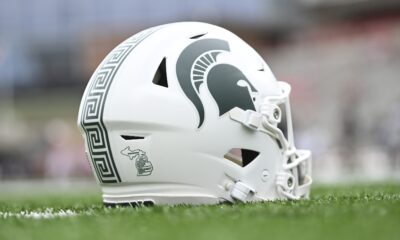

Michigan State football can’t be stopped, lands 3-star WR Zach Washington
-
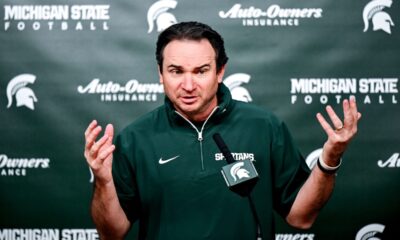

Michigan State football: What does ‘SD4L’ mean, anyway?
-
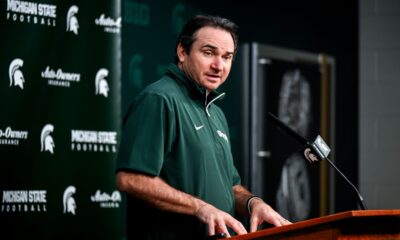

A pair of Michigan State football WRs enter the transfer portal
-


Michigan State baseball gets series win over Northwestern
-
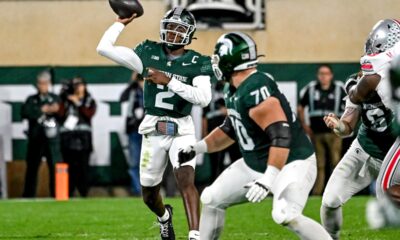

Luke Newman talks Michigan State football, 2025 NFL Draft
-


Michigan State hockey fans react to Isaac Howard’s return
post sidebar

Michigan State football can’t be stopped, lands 3-star WR Zach Washington

Michigan State football: What does ‘SD4L’ mean, anyway?

A pair of Michigan State football WRs enter the transfer portal

Michigan State football: New rumored coaching candidate is causing mass panic

Michigan State football insider confirms discussions with Urban Meyer


